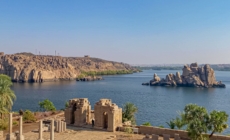-
Olympics News: Best Moments From the Opening Ceremony - 2 mins ago
-
Opening Ceremony Misses the Boat - 3 mins ago
-
Harvey Weinstein’s Medical Condition Takes Massive Turn - 38 mins ago
-
Vivian Jenna Wilson, Elon Musk’s Transgender Daughter, Says He Was ‘Cruel’ and ‘Uncaring’ - 47 mins ago
-
How to Watch Men’s Basketball at the 2024 Paris Olympics: Streams, Schedule - about 1 hour ago
-
Trump, Honing Attacks on Harris, Casts Her as a Far-Left Threat - 2 hours ago
-
Woman Explains Why She Decided To Have Rescue Dog Euthanized Over Behavior - 2 hours ago
-
Justice Dept. Defends TikTok Law That Forces App’s Sale or Ban - 2 hours ago
-
Archaeologists Find Ancient Egyptian Artworks Hidden Below Nile Waters - 2 hours ago
-
Trump Warns of Vote Rigging, Asks Christians to Vote ‘Just This Time’ - 3 hours ago
Students chant during Berkeley’s commencement ceremony

UC Berkeley Chancellor Carol Christ opened her comments at the university’s commencement ceremony Saturday by addressing recent student protests on the campus with a long and deeply influential legacy of student activism.
“I’m saddened by how this conflict has divided students, faculty and staff,” Christ said. “While most of our campus community has engaged peacefully, political positions have bled over too easily and quickly to antisemitism and anti-Palestinian harassment.”
“We have lost the ability to talk with one another,” she added. “It is my hope that we can soon find a way to recognize our shared humanity.”
Whistles and applause rang out from the crowd. Eventually, as some people began to chant and shout, Christ continued her remarks over all the noise. A few minutes later, Sunny Lee, the university’s dean of students, asked the crowd to quiet down.
“If you continue to disrupt the event,” Lee said, “we will have you leave.”
A livestream of the event showed several law enforcement officers walking briskly behind the podium. A few minutes later, as louder chants began to ring out from the crowd — including a chorus of “Hey hey, ho ho, the occupation has got to go!” — Lee again asked for quiet.
Moments later, the livestream of the event cut out for several minutes and instead music, including Journey’s “Don’t Stop Believin’,” played in the background.
Since the beginning of the Israel-Hamas war, universities across the state and nation have grappled with how to respond to both protests on campus and students’ commentary about the war at off-campus sites and online.
In April, a dinner for graduating UC Berkeley law students at a dean’s home devolved into a tense confrontation and accusations of anti-Muslim and anti-Jewish hatred — a scene that captured national headlines after video spread of the dean shouting at a student, “Please leave. No. Please leave.”
Later in the month, Dan Mogulof, an assistant vice chancellor at the university, put out a statement saying UC Berkeley would “take the steps necessary to ensure the protest does not disrupt the university’s operations.”
At USC, President Carol Folt’s decision to rescind the valedictorian’s speaking slot after undisclosed threats sent the campus into two solid weeks of protest and controversy. Many classes moved online and the university canceled its main stage ceremony, instead offering an alternative celebration at Los Angeles Memorial Coliseum.
On Friday, Asna Tabassum, the Muslim valedictorian whose speech was canceled amid controversy over her pro-Palestinian views, received her diploma during the Viterbi School of Engineering graduation ceremony. Wearing a sash bearing her academic achievements, including her minor in resistance to genocide, Tabassum beamed, and her entire class and some spectators stood to applaud her.
Earlier this month, amid questions about why UCLA was so poorly prepared to stop a recent attack on a pro-Palestinian camp formed at the heart of campus, the university announced it had launched an internal probe and implemented new security procedures.
And Pomona College — where, last month, police in riot gear arrested several people who occupied the college president’s office — announced recently that it was moving its Sunday commencement ceremony off-site to the Shrine Auditorium in Los Angeles.
But Berkeley has a uniquely long and influential role in the history of campus protests.
In the winter of 1964, students protesting free speech restrictions occupied the campus’ Sproul Hall and, at one point, thousands of students surrounded the police car in which a student leader had been detained.
Protests went on for months, garnering national headlines, and eventually many of the restrictions were lifted — a step that paved the way for later movements in opposition of the Vietnam War and in support of environmentalism and women’s rights. A decade ago, the campus that once tried to censor many of the student leaders invited them back to campus, lauding them as heroes.
In May 1969, on the sixth day of demonstrations over plans to develop land known as People’s Park, then-Gov. Ronald Reagan called in more than 2,000 National Guard troops and hundreds of highway patrolmen, who descended on campus with weapons. A helicopter hovered overhead, spraying protesters with tear gas.
More than half a century later, Gov. Gavin Newsom has taken a decidedly different approach, keeping largely in the background as universities across the state stumble with how to respond to current protests.
Source link



















